Formulas
are the bread and butter of Excel, and If you use Excel on a regular
basis, I bet you're working with a lot of formulas. But getting formulas
working properly is tricky, and too often a problem that seems simple
ends up taking far too long. In this article, I share some good tips to
save you time when working with formulas in Excel.
Rather watch a video? We take a speed run through 20+ tips
in this video.
Don't add the final parentheses to a function
Let's start out with something really easy! When you entering one
function on it's own (SUM,AVERAGE, etc.) you don't need to enter the
final closing parentheses. For example, you can just enter:
=SUM(A1:A10
and press return. Excel will add the closing parentheses for you.
It's a small thing, but convenient. Note that this won't work if your
formula contains more than one set of parentheses.


Move a formula and keep references from changing
One of Excel's most powerful features is relative addresses — when
you copy a formula to a new location all relative addresses will change.
Often this is exactly what you want, because the reuse of formulas is
one of the most important techniques of a well-built, easy to maintain
worksheet.
But sometimes you need to move or copy a formula to a new location
and you don't want the formula to change at all. There several ways you
can do this.
If you're just moving a formula to a nearby location, try drag and drop. Dragging will keep all addresses intact and unchanged.
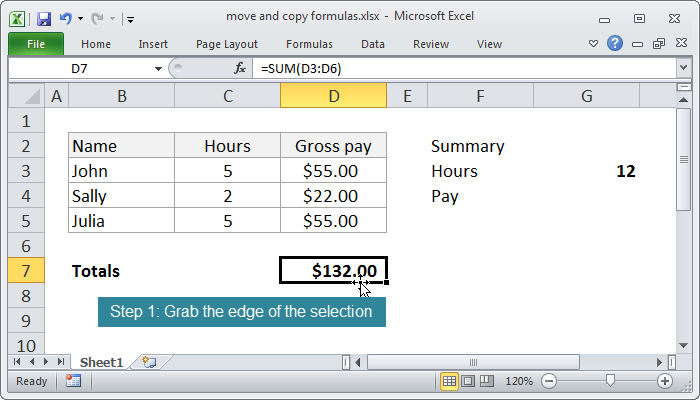
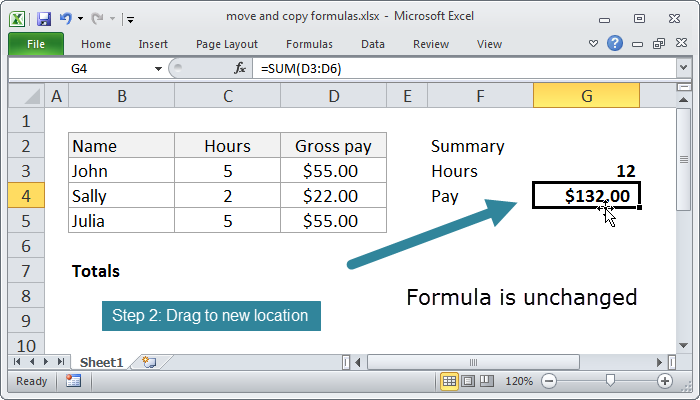
If you moving a formula to a more distant location, use cut and
paste. (Win: Ctrl + X, Ctrl + V Mac: Cmd + X, Cmd + V ) When you cut a
formula, it's references do not change.
Copy a formula and keep references from changing
Note: you could change all cell references to make them absolute,
but this tip assumes that you don't want to do that, for whatever
reason.
If you just need to copy a single formula, select the entire formula
in the formula bar and copy to the clipboard. You can then paste at a
new location. The result will be a formula identical to the original.
If you need to copy a group of formulas to a new location without
affecting references, there are two approaches you can use. First, you
can use find and replace. Select the formulas you want to copy, then
search for and replace the equal (=) sign in the formulas with some
other character (use something that won't appear in the formulas, like #
). This will convert the formulas to text. Now copy and paste the
formulas to a new location. After you paste the formulas, and with all
formulas selected, reverse the search and replace process. Search for
the hash (#) and replace an equal sign (=). This will restore the
formulas to working order. (Credit:
Tom Urtis)
Here's another tricky way to do the same thing: Select all the cells
with formulas you want to copy. Next, change the number format to Text,
and enter edit mode (Win: F2 Mac: Ctrl + U). Next, press Control + Enter
to update all formulas to Text format. Now copy the formulas to a new
location and reverse the process: change the format to General, enter
edit mode, and press Control + Enter. (Credit:
Sumit Bansal)
Double click the fill handle to copy down formulas
When you're adding formulas to tables, one of the things you do most
often is copy the formula from the first row of the table to the last
row of the table. If you know the keyboard shortcuts for navigating data
in Excel, you can use them to quickly paste in a whole column of
formulas in just a few key strokes. However, the fill handle is even
faster, because there's no need to navigate to the bottom of the table.
The fill handle is the little rectangle that sits in the lower right
corner of all selections in Excel. As long as the formula sits in a
column next to another column will a full set of data, you can just
double-click the fill handle to copy the formula all the way down to the
bottom of the table.
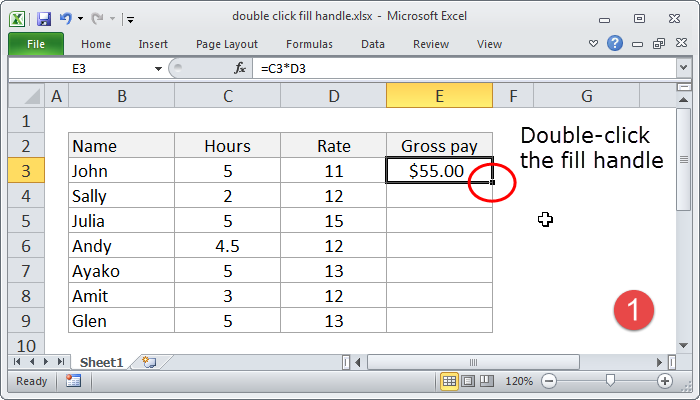
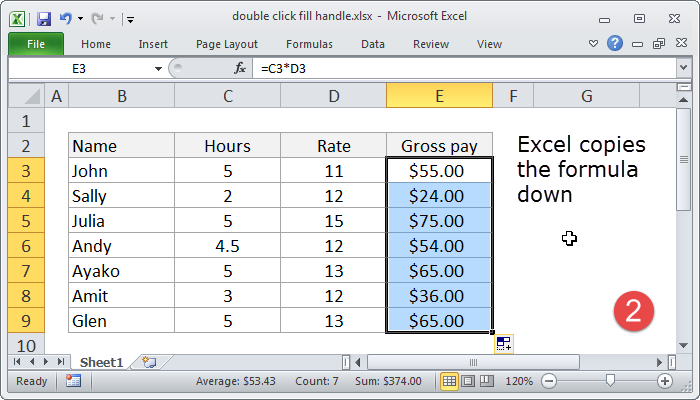
Note: This tip won't work if there's not a full column of data the
left of the formula you are entering. Excel uses this data to figure out
how far down the worksheet to copy the formula. You can use this next
approach however...
If the selection is not too large, you can also fill formulas down a
worksheet using the shortcut for Fill Down (Control + D). Just make sure
to select the original formula and the target cells first. This is
faster than copy/paste, but not as fast as the fill handle, especially
if you are copying the formula into a large group of cells.
See also:
https://exceljet.net/tips/how-to-move-around-big-lists-fast
Use a table to enter formulas automatically
An even faster way to enter formulas is to first convert your table
to an official Excel Table. The terminology here is confusing, since any
data with more than one column is technically a "table" but Excel has a
formal structure called a Table that provides many benefits. Once you
convert your data to a table (Both platforms: Ctrl + T), all formulas
you enter in the first row will be automatically copied down the full
length of the table. This saves a lot of time and also helps to prevent
errors.
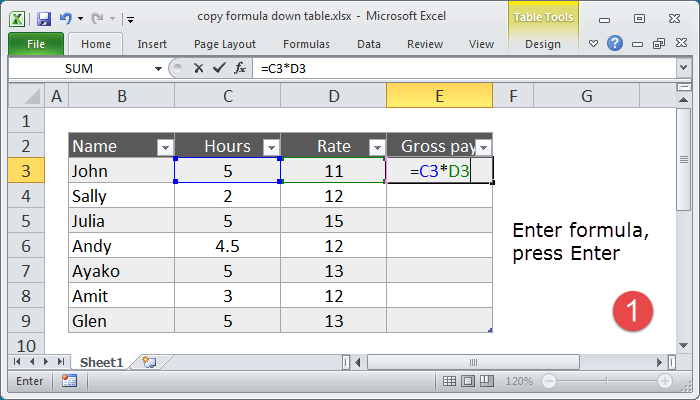
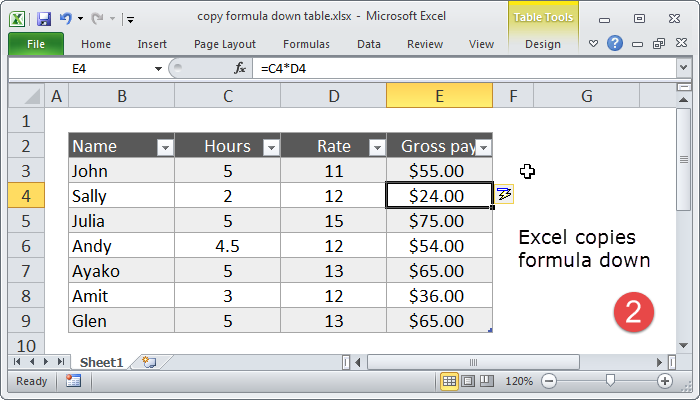
As a bonus, when ever you update a formula in a table, Excel will again update all like formulas in the same column.
Note that formulas in a table will automatically use structured
references (i.e. in the example above =[@Hours]*[@Rate] instead of
=C4*D4. However, you can type cell addresses directly and they will be
preserved.
Use AutoComplete + tab to enter functions
When you enter an equal sign and start typing, Excel will start
matching the text you enter against the huge list of functions that are
available. As you type, you'll see a list of "candidate" functions
appear below. This list will narrow with each letter you type. Once the
function you want is selected in the list, you can "ask" Excel to enter
it for you by pressing tab. On Windows, functions are selected
automatically as you type. On a Mac options are presented but not
selected, so you need to take one more step: use the arrow key to select
the function you want, then press tab or return to have Excel enter the
function for you.


Use Control + click to enter arguments
Don't like typing commas between arguments? You can have Excel will
do it for you. When you're entering arguments in a function, just hold
down Control (Mac: Command) as you click each reference and Excel will
automatically enter commas for you. For example, you can enter a formula
like: =SUM(A1, B10, C5:C10) by entering "=SUM(" then Control-clicking
each reference. This will work with any function where you are supplying
references as arguments.



Use the formula tip window to select arguments
Whenever you're working with a formula that contains an Excel
function, remember that you can always use the hint window to select
arguments. This can be real time-saver if the formula is complicated,
especially if it contains lots of nested parentheses. To select
arguments, work in two steps. In step one, click to put the cursor
inside the function whose argument you want to select. Excel will then
display a hint for that function that shows all arguments. In step two,
click the argument you want to select. Excel will select the entire
argument, even when it contains other functions or formulas. These is a
nice way to select arguments when using F9 to debug a formula.
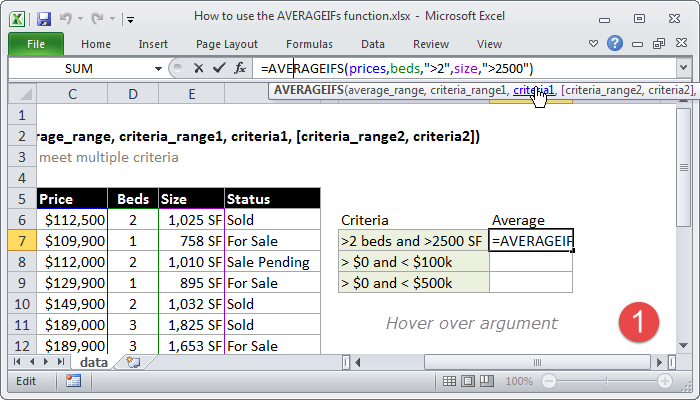
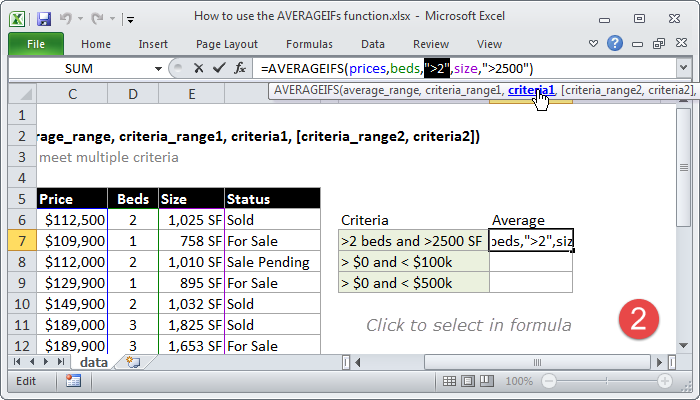
Insert function argument placeholders with a shortcut
Normally, as you enter a function, Excel will present tips about each
arguments as you add commas. But sometimes you might want to have Excel
add placeholders for all the function arguments at once. If so, you'll
be glad to know that there's a shortcut for that.
When you're entering a function, after Excel has recognized the
function name, type Control + Shift + A (both platforms). For example,
if you type "=DATE(" and then use Control + Shift + A, Excel will give
you "=DATE(year,month,day)". You can then double-click each argument (or
use the Function tip window to select each argument) and change it to
the value you want.


Move the "formula thing" out of your way
Sometimes when you're entering a formula, the
formula hint window gets in your way,
blocking your view of other cells you want to see on the worksheet.
When that happens, remember that you can move the hint window out of
your way. Just mouse over the edge of the window until you see the
cursor change, then click and drag to a new location. Then you can
continue entering or editing your formula. Depending on the structure of
your worksheet, another way to manage this problem is to edit the
formula in the formula bar instead of directly in the cell.
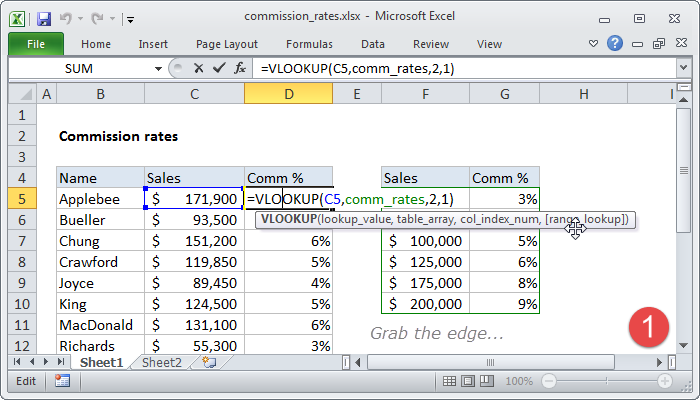
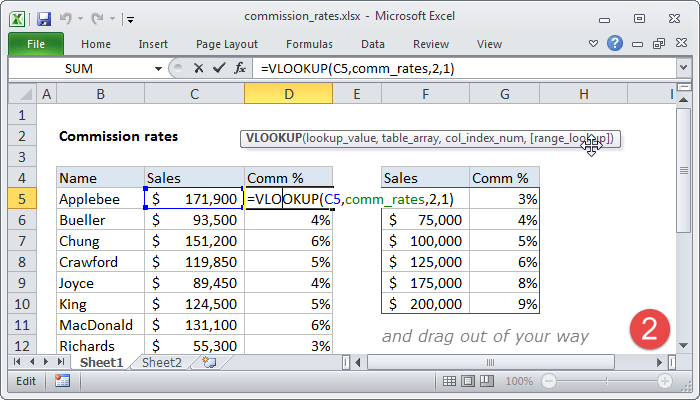
Toggle the display all formulas at once
Whenever you edit a cell that contains a formula, Excel automatically
displays the formula instead of it's result. But sometimes you might
way to see all of the formulas on a worksheet at one time. To do this,
just use the keyboard shortcut for displaying formulas: Control + ~
(that's a tilde). With this shortcut, you can rapidly toggle the display
all formulas on a worksheet or off. This is a nice way to see all
formulas at once, and to check formulas for consistency.

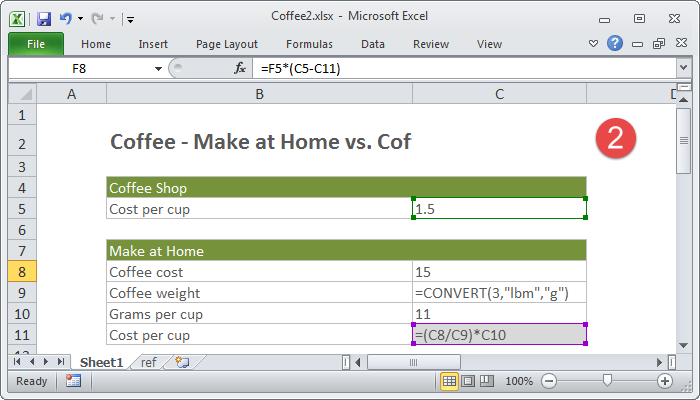
Select all formulas in a worksheet at once
Another way to see all formulas in a worksheet is to select them. You
can do this using of the more powerful (and hidden) features in Excel:
is Go To > Special (Ctrl + G). With this command, you can select all
sorts of interesting things in Excel, including blank cells, cells that
contain numbers, cells that are blank, and much more. One of the options
is cells that contain formulas. To select all cells that contain
formulas on a worksheet, just type Ctrl + G to bring up the Go To dialog
box, then click the Special button, then select Formulas. When you
click OK, all cells that contain formulas will be selected.
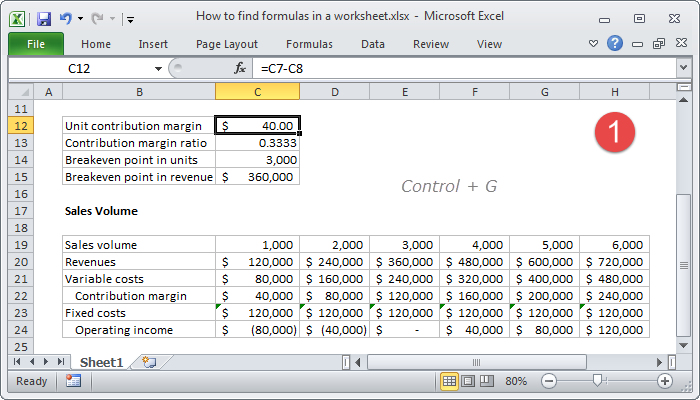
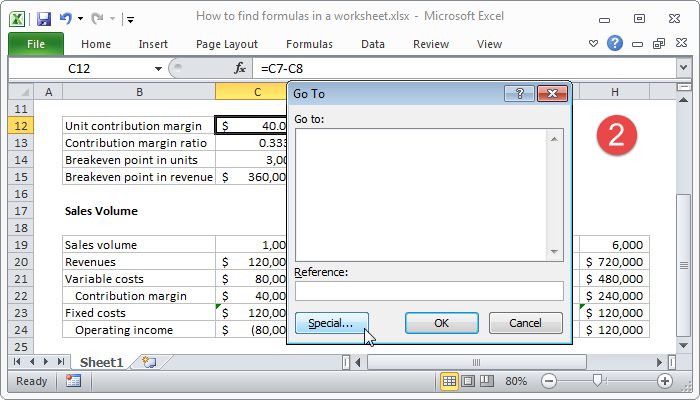
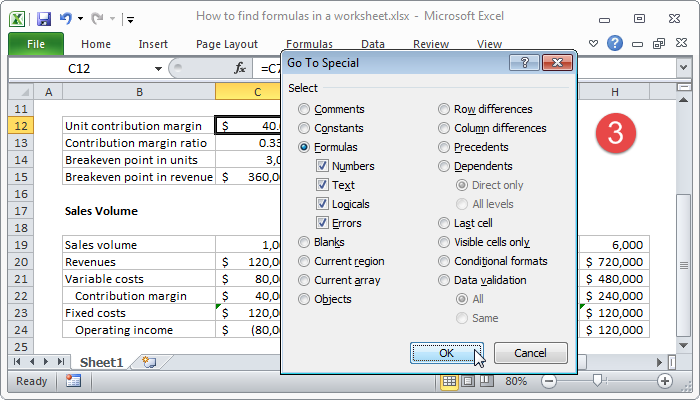

If you want to select only a subset of formulas in a worksheet, make a selection first, then use the same command.
Use paste special to convert formulas to static values
A common problem in Excel is a need to stop calculated values from
changing. For example, maybe you want to simplify a worksheet by
removing "helper" columns that you used to generate certain values. But
if you delete these columns with formulas still referring to them,
you'll get a load of #REF errors. The solution is to first convert
formulas to values, then delete the extra columns. The simplest way to
do that is to to use Paste Special. First, select the formulas you want
to convert and Copy to the clipboard. Next, with the formulas still
selected, open the Paste Special dialog (Win: Ctrl + Alt + V, Mac: Ctrl +
Cmd + V) and use the Values option. This will replace all formulas you
selected with the values they had calculated.
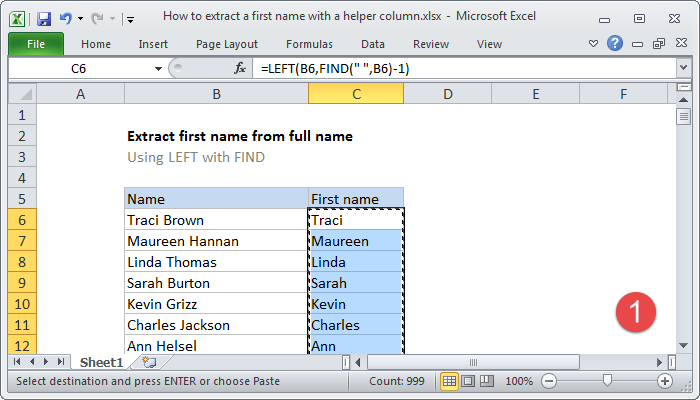
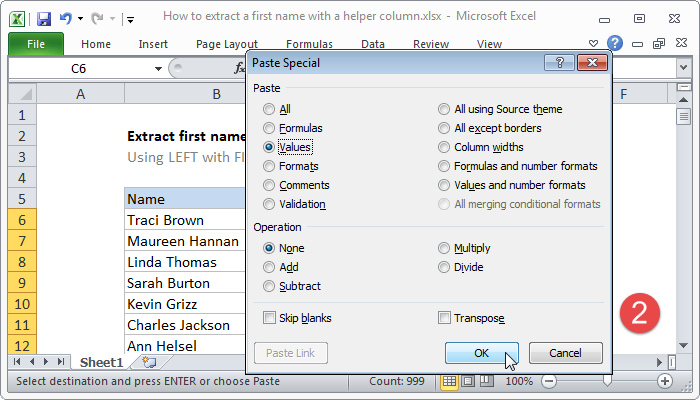
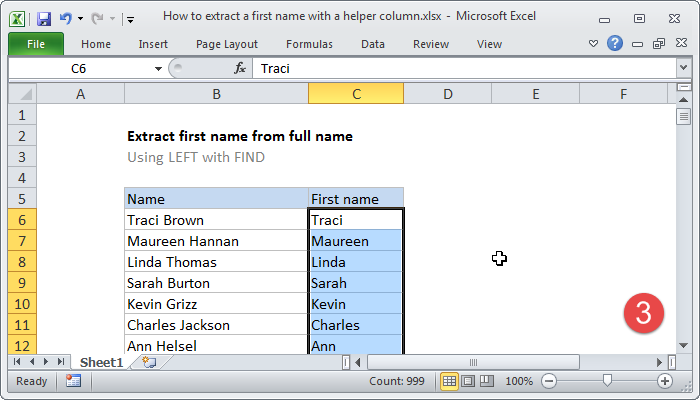
Use Paste Special to adjust values in place
Another common problem in Excel is a need to change a lot of values
in place. For example, perhaps you have a list of 500 product prices and
you need to increase all prices by 5%. Or maybe you have a list of 100
dates that all need to be moved into the future by one week? In such
cases, you could add a "helper" column to your table, perform the
required calculation, convert the results to values, then copy them over
the original column. But if you only need a simple calculation, Paste
Special is much simpler and faster, because you can change the value
directly without any extra formulas.
For example, to convert a set of dates in place to one week later, do
this: add the number 7 to any cell in the worksheet, then copy it to
the clipboard. Next, select all of the dates you want to change. Then,
use Paste Special > Operations > Add. When you click OK, Excel
will add the number 7 to the dates you've selected, moving them forward
in time by 7 days, with no need to create helper columns.
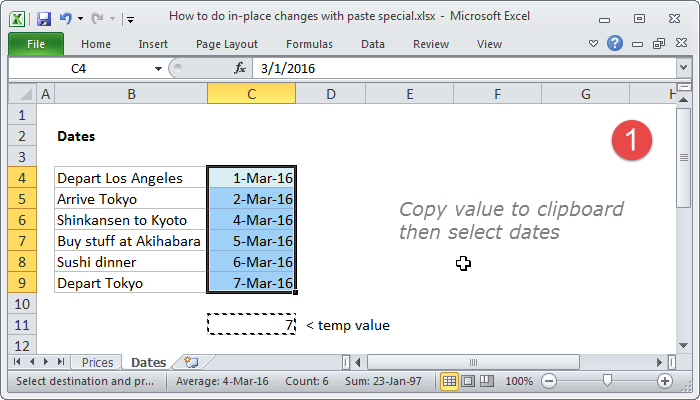
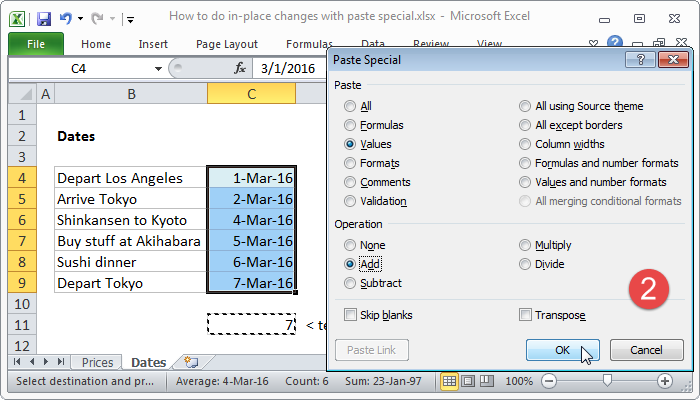
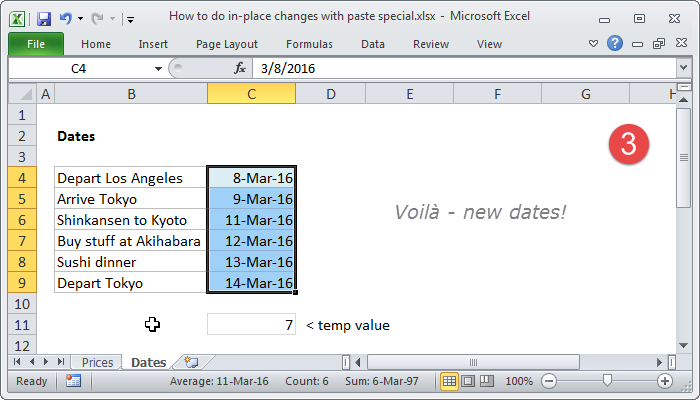
To increase a set of prices by 10%, use the same approach. Enter 1.10
into a cell, and copy it to the clipboard. Then select the prices you
want to change, and use Paste Special > Operations > Multiply to
convert all prices in place. Once you get the hang of this tip, you'll
find lots of clever uses for it.
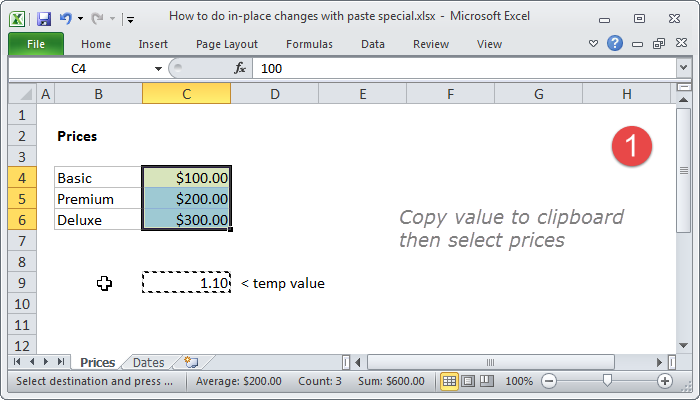
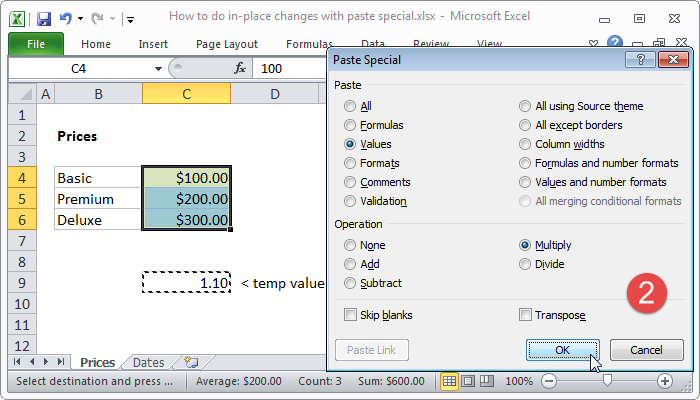
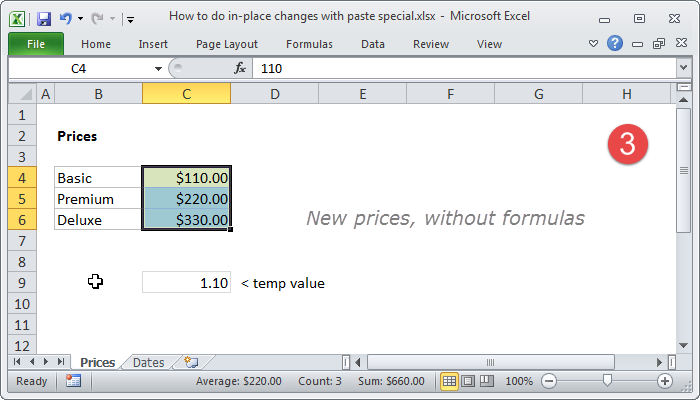
Note: this only works with values. Don't try it with formulas!
Use named ranges to make formulas more readable
One of the oldest pro tips in the book is to use named ranges in your
formulas to make them more readable. For example, let's say you have a
simple worksheet that shows hours worked for a small team. For each
person, you want to multiply their hours worked times a single hourly
rate. Assuming the hourly rate is in cell A1, your formulas might look
like this:
=B3 * $A$1
=B4 * $A$1
=B5 * $A$1
But if you name cell A1 "hourly_rate", your formulas will look like this:
=B3 * hourly_rate
=B4 * hourly_rate
=B5 * hourly_rate
Naming ranges this way makes formulas a lot more readable, and saves
entering a lot of dollar signs ($) to create absolute references.
Naming ranges is easy. Just select the range/cell(s) you want to
name, then type a name in the namebox and press enter. Now that you've
named a range, Excel will use it whenever you point and click on the
range as you're building a formula — when you click a named range,
you'll see it's name automatically inserted into the formula. As a
bonus, you can also easily navigate to the named range whenever you
like. Just select the name from the drop-down that appears next to the
name box.
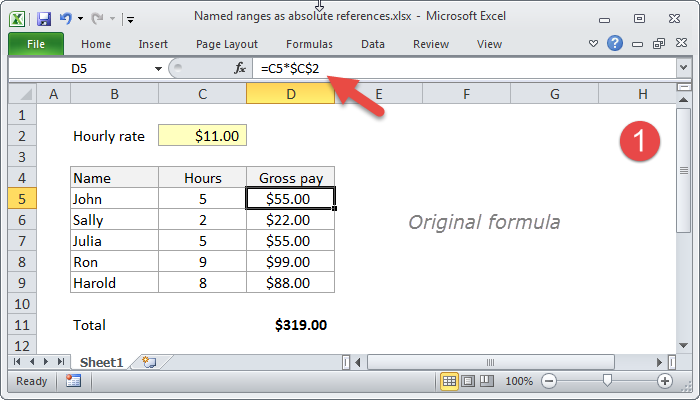
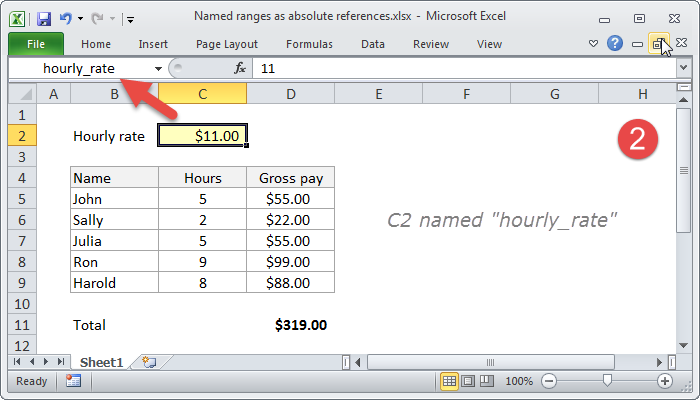
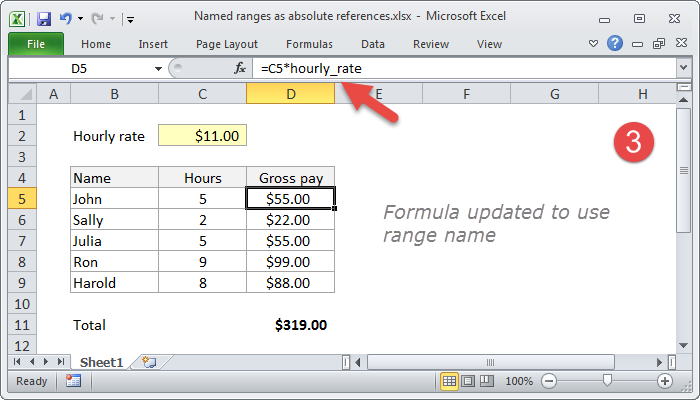
Apply names to existing formulas automatically
What happens when you've already created formulas and then create a
named range you want to use in them? Nothing, actually. Excel won't make
any changes to your existing formulas or offer to apply the new range
names automatically. However, there is a way to apply range names to
existing formulas. Just select the formulas you want to apply names to,
then use the Apply Names feature.
Once the Apply Names window is open, select the names you want to
apply and click OK. Excel will replace any corresponding references with
the names you selected.
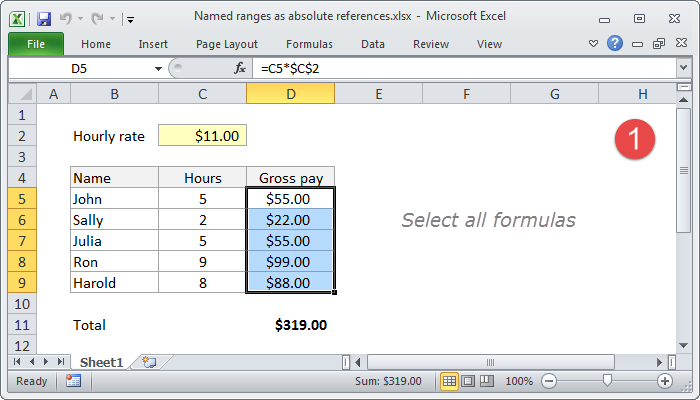


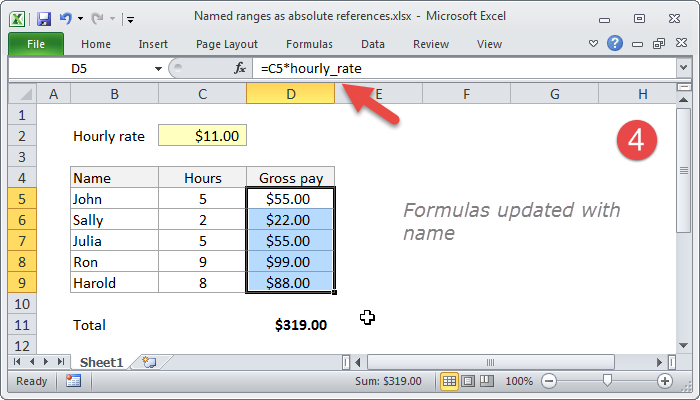
Save a formula that's not done
If you're working with a more complex formula, there's a good chance
it will take a while to get the formula working right. But you might be
short on time and need to come back to the formula later to get it
working like you want. Unfortunately, Excel won't let you enter a
formula that's broken. If you try, Excel will complain loudly that the
formula has errors, and won't let you continue until you've resolved all
problems.
However, there's an easy workaround: just temporarily convert the
formula to text. To do this, you can either add a single apostrophe to
the start of the formula (before the =), or just remove the equal sign
altogether. In both cases, Excel will stop trying to evaluate the
formula and will let you enter it as-is. Later, you can come back to the
formula and resume work.
Be aware of the functions that Excel offers
Functions exist to solve specific problems. You can think of a
function as a pre-built formula with a specific name, purpose, and
return value. For example the PROPER function has just one purpose: it
capitalizes words. Give it text like "nEW york CiTY", and it will give
you back "New York City". Functions are incredibly handy when they solve
a problem that you have, so it make sense to familiarize yourself with
the functions available in Excel.
See:
Excel Functions for the Minimalist and
Excel Formula Recipes for a list of commonly used functions and formulas that use them.
Note: People are often confused by the terminology used to talk about
functions and formulas. An easy way to think about it is this:
everything that starts with an equal sign in Excel is a formula. By this
definition, all functions are formulas too, and formulas can contain
multiple functions.
Use F4 to toggle relative and absolute references
The key to constructing formulas that you can be elegantly copied to
new locations and still work correctly, is using the right combination
of absolute and relative references. The reason this is so important is
because it allows you to reuse existing formulas instead of creating new
ones, and reusing the same formula drastically reduces the possibility
of errors in a workbook by limiting the number of formulas that need to
be checked.
However, converting references back and forth between relative and
absolute references can be a nuisance — typing in all those dollar signs
($) is tedious and error-prone. Luckily, there's a great shortcut that
allows you to quickly toggle through the 4 options available for each
reference: (Windows: F4, Mac: Command + T). Simply put the cursor into a
reference use the shortcut. Each time you use it, Excel will "rotate"
to the next option in this order: fully relative (A1) > fully
absolute ($A$1) > Absolute row (A$1) > absolute column ($A1).
Remember that formulas and functions return a value. Always.
When you're struggling with a formula, sometimes it's because you
think part of the formula is returning a certain value but it fact it is
returning something else. To check what is actually being returned by a
function or by part of a formula, use the F9 tip below.
Note: The word "return" comes from the world of programing, and it
sometimes confuses people new to this concept. In the context of Excel
formulas, it's used like this "The LEN function returns a number" or
"The formula in cell A1 returns an error". Whenever you hear the word
"return" with formula, just think "result".
Use F9 to evaluate parts of a formula
The shortcut F9 (fn + F9 on a Mac) can solve parts of a formula in
real time. This is a fantastic tool for debugging larger formulas, when
you need to verify that the result of a particular part of the formula
is what you're expecting. To use this tip, edit the formula and select
the expression or function you want to evaluate (tip - use the function
tip window to select entire arguments). One you have a selection, press
F9. You'll see that part of the formula replaced by the value it
returns.
Note: On Windows, you can undo F9, but this doesn't seem to work on a
Mac. To exit the formula without making changes, just use Esc.
For a demonstration of F9, see:
How to check and debug a formula with F9
Use Formula Evaluator to solve a formula step by step
When using F9 to evaluate a formula becomes too tedious, it's time to
break out bigger hardware: Evaluate Formula. Evaluate Formula solves a
formula one step at a time. Each time you click the Evaluate button,
Excel will solve the underlined part of the formula and show you the
result. You can find Evaluate Formula on the Formulas tab of the ribbon,
in the Formula Auditing group. To use Evaluate Formula, select a
formula, and click the button on the ribbon. When the window opens,
you'll see the formula displayed in a text box with an Evaluate button
below. One part of the formula will be underlined — this is the part
currently "under evaluation". When you click evaluate, the underlined
portion of the formula is replaced with the value it returns. You can
keep clicking evaluate until the formula is fully solved.
For a demonstration of Evaluate Formula, see:
How to Evaluate Complex Formulas
Note: Evaluate formula is only available in the Windows version of
Excel. The Mac version takes a different approach, called Formula
Builder, which displays results as you create a formula. It's not quite
the same functionality, but it is very helpful, and you can use it with
formulas that already exist.
Build complex formulas in small steps
When you need to build a more complex formula, and aren't sure how to
do it, start with the general approach and some hard-coded values. Then
add in more logic to replace the hard-coded values one step at a time.
For example, let's say you want to write a formula that extracts the
first name from a full name. You know you could use the LEFT function,
to pull text from the left, but you're not sure how to calculate the the
number of characters to extract. Start with LEFT(full_name, 5) to get
the formula working. Then figure out how to to replace the number 5
with a calculated value. In this case, you can work out the number of
characters to extract by using the FIND function to locate the position
of the first space character.
For a demonstration of this tip, see
How to build a complex formula step by step
Use named ranges like variables
In many cases, it makes sense to use named ranges like variables to
make your formulas more flexible and easier to work with. For example,
if you're doing a lot of concatenation (joining text values together),
you may want to create your own named ranges for new line characters,
tab characters, etc. This way, you can simply refer to the named ranges
directly instead of adding a lot of complex syntax to your formulas. As a
bonus, if your named ranges contain text values, you don't need to use
any quotation marks around the text when you add them to a formula.
This idea a little hard to explain so
see this video for a detailed example.
Use concatenation in labels to make assumptions clear
When you create a worksheet that relies on certain assumptions, it
can be a challenge to clearly show the assumptions you're making. Often,
you'll have a certain area on the worksheet for inputs and another area
for outputs, and there isn't room to show both at the same time. One
way to make sure key assumptions are clear is to embed them directly
into labels that appear on the worksheet using concatenation, usually
with the TEXT function.
For example, normally, you might have a label that says "Coffee cost"
followed by a calculated cost. With concatenation, you can make the
label say "Coffee cost ($2.00/cup): which makes it clear that you have
assumed a cost of $2.00/cup.
Also
see this video for a detailed example.
Add line breaks to nested IFs to make them easier to read
When you're creating a nested IF formula, keeping track of true and
false arguments in a blizzard of parentheses can get very confusing. As
you wrangle the parentheses, its easy to make a mistake in the logic.
However, there is a simple way make a formula with multiple IF
statements much easier to read: just add line breaks to the formula
after each TRUE argument. This will make the formula read more like a
table.
To see this tip in action,
see this short video.
Enter functions with AutoComplete
When you're entering a function, excel will try to guess the name of
the function you want, and present an AutoComplete list for you to
select from. The question is, how do you accept one of the options
displayed and yet still stay in edit mode? The trick is to use the tab
key. When you press tab, Excel adds the complete function and leaves the
cursor active in the parentheses so that you can fill in the arguments
as needed. On a Mac, you need to use the down arrow key first to select
the function you want to add, then press Tab to insert the function.
Use AutoSum to enter SUM formulas
You don't always get the chance to use this AutoSum, but when you do,
it's satisfying. AutoSum works for both rows and columns. Just select
an empty cell to the right or below the cells you want to sum, and type
Alt + = (Mac: Command + Shift + T). Excel will guess the range you are
trying to sum and insert the SUM function in one step. If you want to be
more specific, so that Excel doesn't guess, first select the range you
intend to sum, including the cell where you'd like the SUM function to
be.
AutoSum will even insert multiple SUM functions at the same time. To
sum multiple columns, select a range of empty cells below the columns.
To sum multiple rows, select a range of empty cells in a column to the
right of the rows.
Finally, you can use AutoSum to add both row and column totals at the
same time for an entire table. Just select a full table of numbers,
including empty cells below the table and to the right of the table, and
use the shortcut. Excel will add the appropriate SUM functions in the
empty cells, giving you column totals, row totals, and a grand total in a
single step.
Enter the same formula in multiple cells at once
Often, you'll need to enter the same formula into a group of cells.
You can actually do this in one step with the keyboard shortcut Control +
Enter. Just select all the cells at the same time, then enter the
formula normally as you would for the first cell. Then, when you're
done, instead of pressing Enter, press Control + Enter. Excel will add
the same formula to all cells in the selection, adjusting references as
needed. When you use this approach you don't have to copy and paste,
fill down, or use the fill handle. You're done in one step.
You can also use this same technique to edit multiple formulas at the
same time. Just select all of the formulas at once, make the change you
need, and press Control + Enter.








































